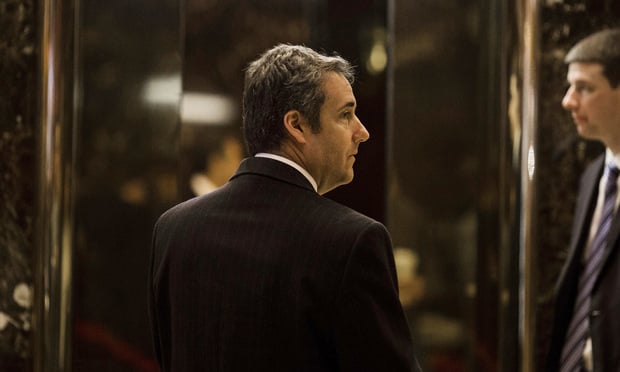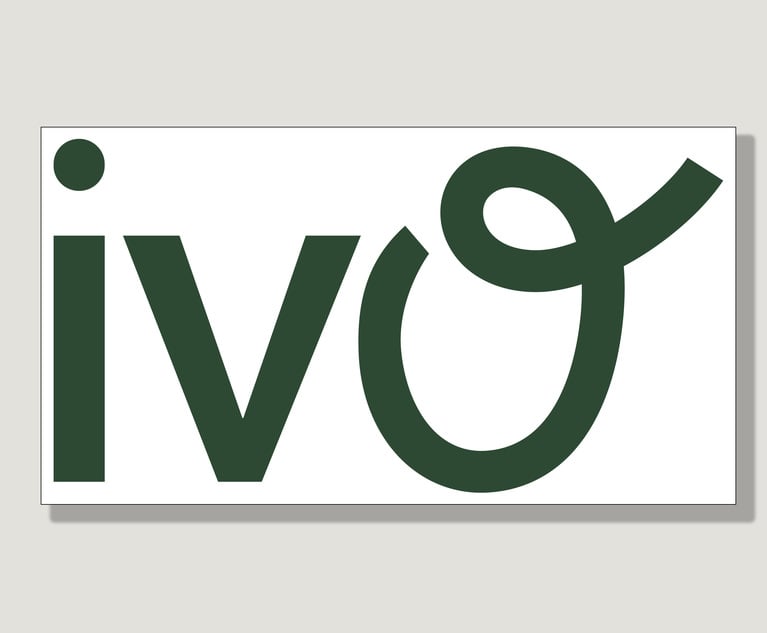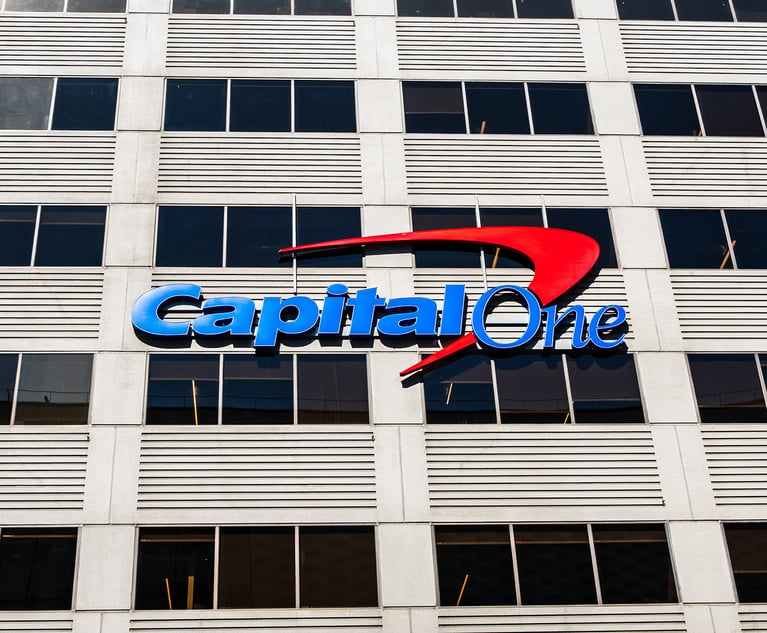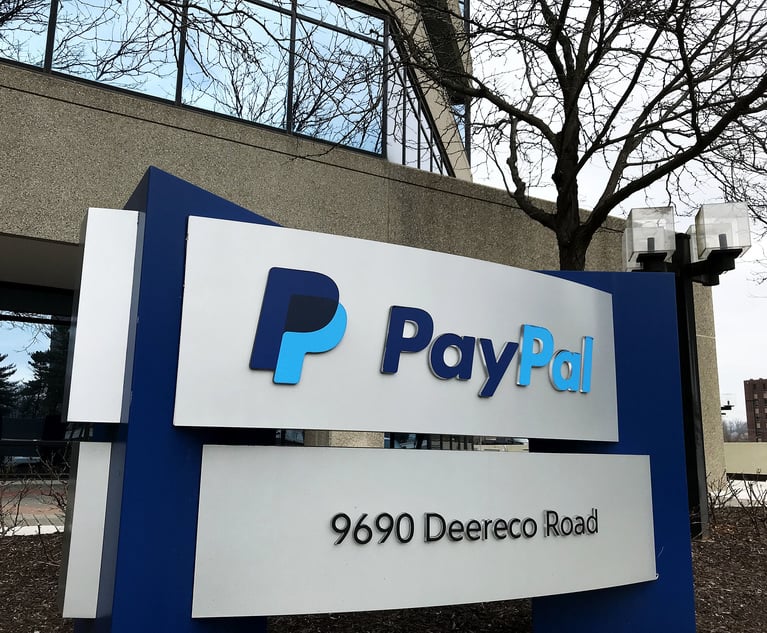Cracking the Puzzle of Corporate Anonymity
A number of investigative techniques can bring even the most ingeniously opaque arrangements into the light.
April 10, 2018 at 04:24 PM
5 minute read

Michael Cohen almost pulled it off. As Donald Trump's personal attorney, Cohen went to great lengths to mask the source of a $130,000 payment to the adult film actress known as Stormy Daniels. Pseudonyms were reportedly used for Trump and Daniels in a settlement agreement, and Cohen routed the funds for the payment through a limited liability corporation he formed in Delaware, a state famous for its business-friendly laws and the latitude it grants corporate officers in concealing their identities. Cohen's efforts might very well have succeeded if not for one critical mistake.
He signed his own name on the LLC's certificate of formation.
Cohen's signature made it relatively easy for reporters from the Wall Street Journal to break the blockbuster story of the payment. After they likely received a tip identifying the LLC, they simply pulled its incorporation documents and connected the dots. But puzzling through corporate structures to reveal the individuals and responsible parties behind companies can often be a much tougher task.
For attorneys confronted with a multitude of affiliates, subsidiaries and other information, just figuring out who to sue—or, on the defense side, who exactly is suing their clients—can often seem like an impossibly complex endeavor. Like the Wall Street Journal reporters, they might obtain the name of a corporation, only to discover that its principals are concealed behind legally permitted anonymity. Under Delaware law, Michael Cohen could have hired a third party to sign as the “authorized person” for his LLC. This added level of secrecy may have kept Stormy Daniels from becoming a household name.
A number of investigative techniques can bring even the most ingeniously opaque arrangements into the light. Court records are often a good place to start, as litigation naming a company or its principals will usually contain salient details about them and related parties. Private databases that collect corporate records are another valuable resource. Company officers may have used their addresses when creating other companies, or their lawyers, accountants or registered agents may have done so. These past activities can often trace a path to related corporations, and the formation documents of those entities may not be as carefully crafted to obscure the identities of their officers. A high net-worth individual I was hired to investigate initially showed no apparent assets or related businesses. Looking through property records, I discovered that he had once sold a house to a trust. I searched for other companies that were members of the trust and, sure enough, they were all clearly connected to him. We had located his missing assets.
Phone numbers, email addresses and web domain ownership records are also useful search items for information, and can yield evidence of overlaps between what appear at first glance to be completely unrelated corporations and the people behind them. My firm was hired to look into a medical device company that, like the individual above, had no apparent assets. We found a second company 100 miles away that had been incorporated using the same phone number by the girlfriend of the original incorporator. It legally owned all of the assets. As this example shows, people who do business together often share other aspects of their lives, as well. Scouring social media or news reports can turn up evidence of these connections. Business partners may have attended the same schools. They may serve on the same boards. Perhaps they have been photographed together at a social event or a group outing.
Even with the trove of public information available online, shoe-leather research can still be the best way to generate leads and to confirm any suspected ties between individuals and corporations. This might entail cultivating knowledgeable sources or, when needed, conducting discreet surveillance of key players or locations. At times, the only way to lift the veil of anonymity is to establish enough of a connection between the parties to obtain a subpoena for their records once a lawsuit has begun.
People attempting to legally shield their activities behind corporate facades can apply many of these techniques in reverse, especially in havens of anonymity like Delaware. By minimizing the amount of data available in the public domain and limiting real world contact between the parties involved, it is possible to construct seemingly unsolvable webs of related entities that obscure the parties ultimately responsible for them. There is no guarantee of absolute privacy, however. As Michael Cohen discovered, a single slip-up is often all it takes to spill carefully guarded secrets.
Bruce Gerstman founded Waterfront Intelligence after nine years of conducting nearly every kind of investigation as an investigator with global consulting firm Kroll Associates. He previously conducted investigations as a newspaper reporter, covering legal affairs, crime and the courts for The Contra Costa Times. http://waterfrontintelligence.com/
This content has been archived. It is available through our partners, LexisNexis® and Bloomberg Law.
To view this content, please continue to their sites.
Not a Lexis Subscriber?
Subscribe Now
Not a Bloomberg Law Subscriber?
Subscribe Now
NOT FOR REPRINT
© 2025 ALM Global, LLC, All Rights Reserved. Request academic re-use from www.copyright.com. All other uses, submit a request to [email protected]. For more information visit Asset & Logo Licensing.
You Might Like
View All
Gen AI Legal Contract Startup Ivo Announces $16 Million Series A Funding Round

'Reverse Robin Hood': Capital One Swarmed With Class Actions Alleging Theft of Influencer Commissions in January

'A Death Sentence for TikTok'?: Litigators and Experts Weigh Impact of Potential Ban on Creators and Data Privacy

'Biggest Influencer Scam of All Time'?: PayPal Accused of Poaching Commissions Via Its 'Honey' Browser Extension
Trending Stories
- 1How I Made Office Managing Partner: 'Always Be Willing to Work Harder Than the Person Next to You,' Says Esther Cho of Stradley Ronon
- 2People in the News—Feb. 10, 2025—Flaster Greenberg, Tucker Arensberg
- 3The Support Center for Child Advocates Welcomes New Executive Director
- 4'Shame on Us': Lawyer Hits Hard After Judge's Suicide
- 5Upholding the Integrity of the Rule of Law Amid Trump 2.0
Who Got The Work
J. Brugh Lower of Gibbons has entered an appearance for industrial equipment supplier Devco Corporation in a pending trademark infringement lawsuit. The suit, accusing the defendant of selling knock-off Graco products, was filed Dec. 18 in New Jersey District Court by Rivkin Radler on behalf of Graco Inc. and Graco Minnesota. The case, assigned to U.S. District Judge Zahid N. Quraishi, is 3:24-cv-11294, Graco Inc. et al v. Devco Corporation.
Who Got The Work
Rebecca Maller-Stein and Kent A. Yalowitz of Arnold & Porter Kaye Scholer have entered their appearances for Hanaco Venture Capital and its executives, Lior Prosor and David Frankel, in a pending securities lawsuit. The action, filed on Dec. 24 in New York Southern District Court by Zell, Aron & Co. on behalf of Goldeneye Advisors, accuses the defendants of negligently and fraudulently managing the plaintiff's $1 million investment. The case, assigned to U.S. District Judge Vernon S. Broderick, is 1:24-cv-09918, Goldeneye Advisors, LLC v. Hanaco Venture Capital, Ltd. et al.
Who Got The Work
Attorneys from A&O Shearman has stepped in as defense counsel for Toronto-Dominion Bank and other defendants in a pending securities class action. The suit, filed Dec. 11 in New York Southern District Court by Bleichmar Fonti & Auld, accuses the defendants of concealing the bank's 'pervasive' deficiencies in regards to its compliance with the Bank Secrecy Act and the quality of its anti-money laundering controls. The case, assigned to U.S. District Judge Arun Subramanian, is 1:24-cv-09445, Gonzalez v. The Toronto-Dominion Bank et al.
Who Got The Work
Crown Castle International, a Pennsylvania company providing shared communications infrastructure, has turned to Luke D. Wolf of Gordon Rees Scully Mansukhani to fend off a pending breach-of-contract lawsuit. The court action, filed Nov. 25 in Michigan Eastern District Court by Hooper Hathaway PC on behalf of The Town Residences LLC, accuses Crown Castle of failing to transfer approximately $30,000 in utility payments from T-Mobile in breach of a roof-top lease and assignment agreement. The case, assigned to U.S. District Judge Susan K. Declercq, is 2:24-cv-13131, The Town Residences LLC v. T-Mobile US, Inc. et al.
Who Got The Work
Wilfred P. Coronato and Daniel M. Schwartz of McCarter & English have stepped in as defense counsel to Electrolux Home Products Inc. in a pending product liability lawsuit. The court action, filed Nov. 26 in New York Eastern District Court by Poulos Lopiccolo PC and Nagel Rice LLP on behalf of David Stern, alleges that the defendant's refrigerators’ drawers and shelving repeatedly break and fall apart within months after purchase. The case, assigned to U.S. District Judge Joan M. Azrack, is 2:24-cv-08204, Stern v. Electrolux Home Products, Inc.
Featured Firms
Law Offices of Gary Martin Hays & Associates, P.C.
(470) 294-1674
Law Offices of Mark E. Salomone
(857) 444-6468
Smith & Hassler
(713) 739-1250






